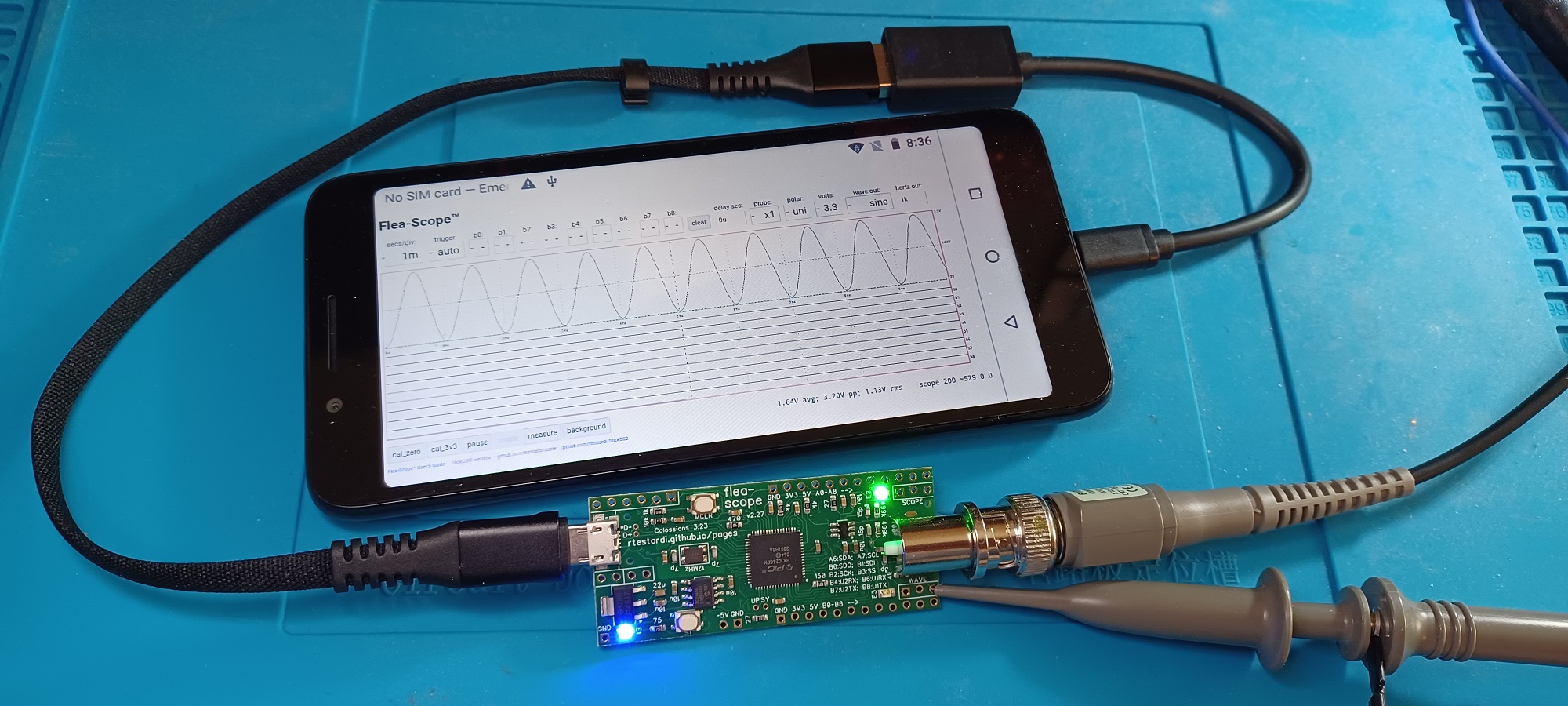Hi all,
I've been working on this for about a year and finally got it into production -- it's a super-simple and easy-to-use USB oscilloscope, logic analyzer, and waveform generator that is controlled by a web-page -- with no software install required! Just open a web-page -- on a computer, tablet, or phone -- and connect to the USB device using WebUSB and you are up-and-running.
The board is basically some life-support and a bit of analog front-end around a fast MCU -- the PIC32MK0512GPK064, with 5 interleaved ADCs running together!
It's also completely open-source, so you can build one yourself if you want and dive into the inner workings -- check out:
https://hackaday.io/project/192598-flea-scope-usb-oscilloscope-18-18-msps-webusbThe full User's Guide with specifications (and a "how it works" section) is here:
https://rtestardi.github.io/usbte/flea-scope.pdfI am dreaming of getting this into high-schools to help kids build technology again -- not just assemble prefab components -- my first oscilloscope cost $400 and had basically the same specs as this! It's likely good enough for most things kids can do with a solderless breadboard or wire wrap!
I also think it's an amazing example of how you can use WebUSB to connect to microcontroller gadgets -- and avoid the whole problem of writing an "app" for a half-dozen different platforms, in different languages, dealing with app stores or driver signing or whatever! Literally, you just open a web-page and you are up-and-running!
The even cooler thing is you can use a different web-page and log in interactively and reprogram the thing in BASIC and take control of all its pins, turning the MCU into a fully re-programmable embedded systems core!
If you know anyone in education who would want these for their classroom, I have a few hundred extra in hackerbox form -- have the school contact me!
-- Rich
